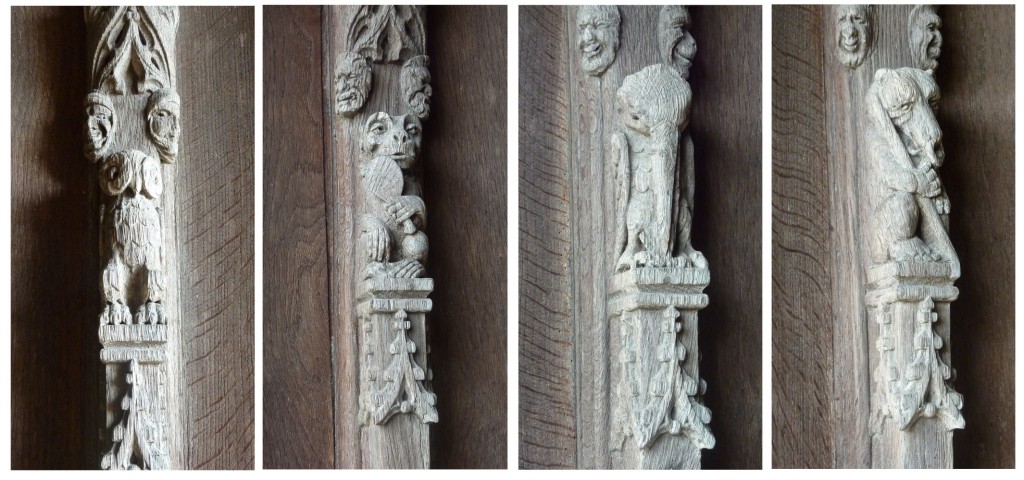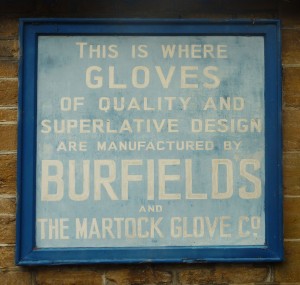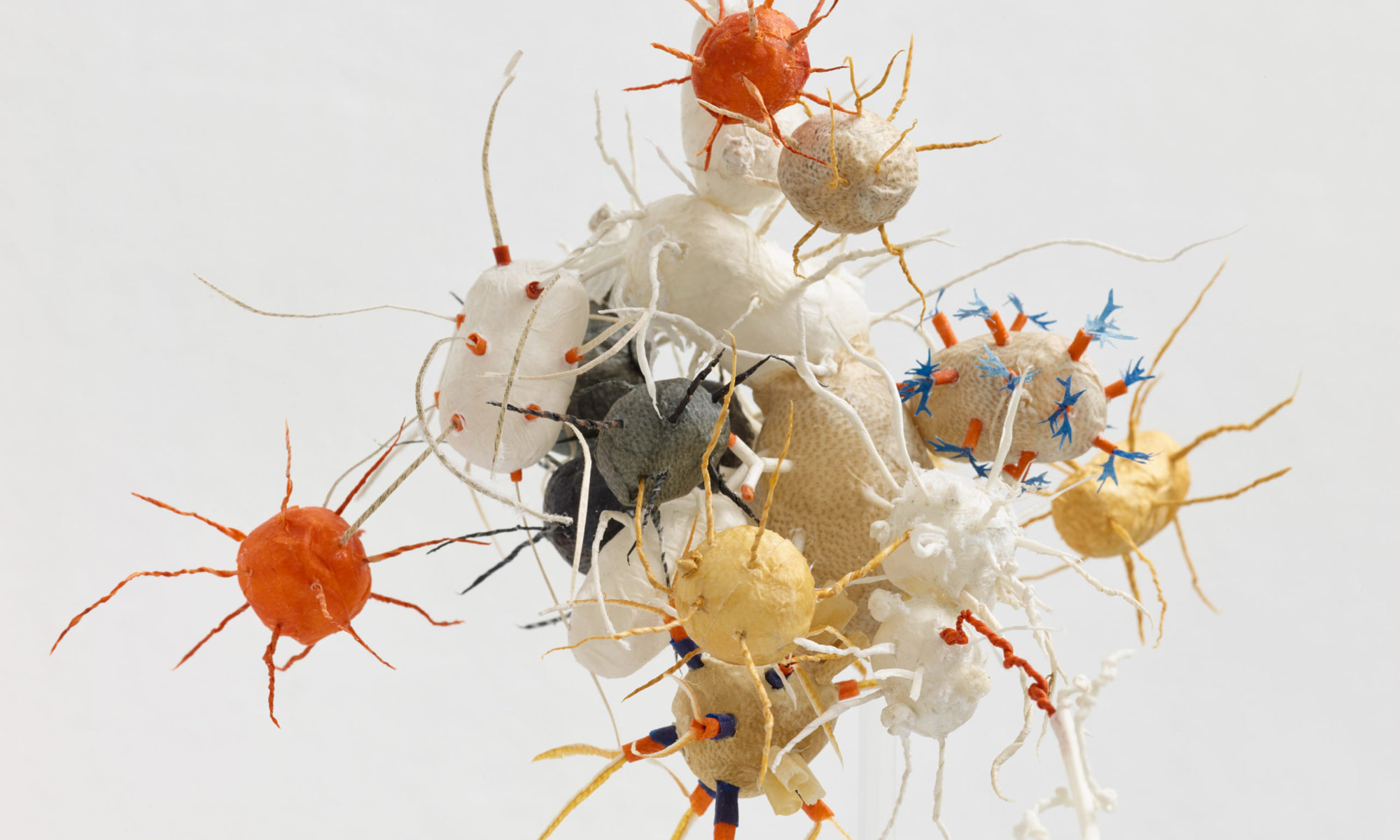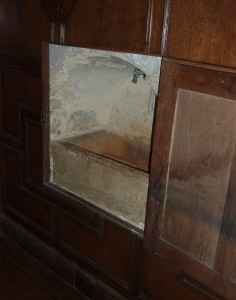The New Materiality- The Crafts Council, Tresor Art Fair
Dangerous Discoveries-Biddulph Grange Gardens
Make the Most- Barrington Court
Make the Most
February 14, 2014 Installed
I was the last artist to install my work before the official opening date of the exhibition on the 7th September. This gave me a great perspective of my own work in the context of the exhibition as a whole. The contrast between Laura Ellen Bacon’s room sized installation, in which you could immerse yourself in a willow tunnel, and my own work which requires the viewer to engage with concentrated niches of detail, provided intriguing but divergent ways of exploring the spaces within the house. The geometric solidity of the ham stone pieces used in the carving of Thomas Appletons ‘Stonemasons of Barrington’ pieces and the nuanced grain of Gary Allsons oak (mature and new) digital carvings created an interesting dynamic opposite Maeve Clancy’s delicate narrative paper cutting. All the participating artists seemed to have drawn strongly not just from a response to the house but from relation to material, landscape and local craft ecology.

White Garden is based on the imaginings of a spectacular flower head inspired by the Gertrude Jekyll influenced White Garden at Barrington. A spherical form lends accord to this hybrid of component parts but each element is taken from different aspects its environment; plants from the garden and forms derived from the flora and fauna of Lyle’s extraordinary collection of wooden panelling installed around the house. A component part is also included for a number of glove makers interviewed as part of the research and making process, paying tribute to their extraordinary knowledge of material and process and the quiet, repetitive making required to acquire these craft skills.

Foliose is derived from lichens forms found around Barrington Court house and grounds. These lichens inhabit a pair of handmade gloves, supplied by Burfield Gloves and the correct fit for Barrington Head Gardener Christine Brain. Although rendered impractical by the application of the lichens the gloves are attributed by fit to Christine in honour of her work and expertise in the garden. As indicator species lichens tell an alternative history of the house and its’ environs. The work is designed to question assumptions about the aesthetic of leather, provoking a closer look, and articulate the diverse and patient making involved in working with such a material in both a contemporary and traditional context.
Press Release September 2013
Laura Youngson Coll
Laura is participating in a discussion about the work and exhibition with curator Deirdre Figueiredo, fellow commissioned artist Thomas Appleton and the supplier Harvey Stone. Barrington Court, Friday 4th October. For further information contact the SAW office 01458 253800.
Contact details
Laura Youngson Coll
07870 899920
laura@theintricateproject.co.uk
Further Information
Blog of the Make the Most project: www.laurayoungsoncoll.co.uk/barrington/
Decorative Leatherwork: www.theintricateproject.co.uk
Sculptural/Installation work: www.theminiatureworldsshow.co.uk/laurayoungsoncoll/index.html
ENDS
Editor’s Notes:
Make the Most exhibition at Barrington Court, Barrington Ilminster, Somerset TA19 0NQ.
01460 242614. Exhibition runs until 31st October
September 10, 2013
Getting Started
Each piece of work will respond to aspects of the house, garden and the long held skills of local craftspeople (specifically Burfield’s Glove Makers). The work will explore the depiction of the natural world within our domestic spaces; with reference to the arts and crafts influence in the 20th century renovations of the house and garden, and the many depictions of strange flora and fauna in Lyle’s eclectic collection of wooden panelling. The work is also designed to question assumptions about the aesthetic of leather, provoking a closer look, and articulate the diverse and patient making involved in working with such a material in both a contemporary and traditional context.
Work 1
I imagine a spectacular flower taken from the Jekyll influenced white garden to place within the house, although on closer inspection all is not as it first seems! A hybrid of plants from the garden, and flora and fauna taken from the panelling, a spherical form made of many components or ‘flower heads’ will allow a variation in each one; an eclectic but cohesive hybrid! This piece is primarily made of vellum with hair sheep and deer leather (from Burfields) detailing.

Plant forms in the White Garden

Experimentation with forms in vellum using hair sheep leather scraps from Burfield’s for detailing of anther and pollen
Integrated into this piece will be a tribute to the glove makers at Burfields. I was very struck by the intuitive knowledge of material and process which the glove makers seem to possess which is only achieved through hours and years of practice. Each maker will be represented by a single component, a repetitive plant form echoing the quiet, patient making involved in these processes. Most will be anonymous although I’m hoping to get a list of names. I’m also in the process of collating specific information about the glove making lives of some of the Burfield employees allowing a more personal dedication in some aspects of the work.

Beginnings of creating the spherical, hybrid form of work 1
Work 2
This piece will be based on a pair of gloves which Burfield’s have kindly agreed to supply. These will be the correct fit for head gardener Christine Brain. The gloves will be covered in leather lichens made from the leather scraps supplied by Burfields and based on lichen forms found in the garden at Barrington.

Lichens in the White Garden
Although rendered impractical by the application of the lichens I thought it would be appropriate that the gloves fit Christine as a tribute to her work and expertise in the garden.
As lichens are an indicator species they tell an alternative history of the house and its’ environs in the century since its renovation. The archive records state that the walls and gates are 20th century constructions but stone may have been recycled from earlier building.

Making glove lichens for the beautiful gloves supplied by Burfield’s, the lichens begin to inhabit the glove surface September 10, 2013 An Introduction to my work
The minutia of the natural world is central to my work. The texture, palette and material qualities of leather and vellum are used to convey the complexities of this world. Initially trained as a sculptor and installation artist, I have subsequently worked with bookbinders and leatherworkers for many years, learning traditional techniques and taking these skills back into my own sculptural work.
The techniques of on-laying, paring and manipulating saturated leather are used within the work disengaged from their familiar function within book arts. After spending years becoming proficient in these techniques the realisation of their potential in my sculptural work is an on-going process.

Untitled (Lichens) 2013, Vegetable tanned leather, vellum
My latest works explores the forms of lichens, a small but significant detail. Inherently curious, subtle but persistent, lichens function as the ultimate decorative surface belying a complex sensitivity to the environments they inhabit. Rendered in extravagantly crafted leather scraps, the artifice of these forms evokes a curiosity about their place within the world.
Core Techniques
Paring
Paring is the thinning of leather with a surgical scapel or paring knife. This is mainly employed to create smooth joins between pieces with no blunt egdes. A small area along the edge of the leather is thinned down until the edge is extremely thin allowing a smooth transition to the next piece.

Left: Paring the edge of vellum
Right: Paring scraps of leather to make lichens, scalpel and bone folder used to work leather
Paring allows leather and vellum to be thinned in a very controlled way creating minute pieces to transform into lichens or other forms. When vellum is pared very thin it becomes translucent allowing light to travel through its surface and illuminate.
Saturated Gluing
The leather or vellum is glued with a starch paste. The paste is worked into the leather over a period of time infusing the skin and allowing it to become maleable. It can then be worked into forms or shaped around a form.
On-laying
On-laying is used in bookbinding to create layers of colour or texture. Thinly pared pieces of leather are applied to a surface to create a graphic or image. I use similar techniques applying them to three dimensional work. August 11, 2013 Site Visit: Barrington Court

I visited this extraordinary place in June and met two of the other participating artists Thomas Appleton (stone) and Gary Allson (wood), the curator of the project Deirdre Figueiredo (Craftspace), Carol Carey of SAW and Sonja Powers (house and collections manager at Barrington). Great to meet everyone, discuss the project and start thinking about work in the context of the house and grounds.
Some History
Barrington Court is a 16th century Tudor mansion completed in 1559 already having had several owners. In 1625 it was purchased by William Strode, a clothier from nearby Shepton Mallet. The Strode family presided over its restoration and care until the mid 18th century. In 1674 a large stable block was built adjacent to the main house. By the middle of the 19th century the house had been demoted to the status of let farmhouse and had gone into serious decline. In 1907 the estate was purchased by the National Trust, the first country house property it acquired
After struggling to meet the huge renovation costs of such a property the National Trust leased the estate to Col. Arthur Lyle of the Tate and Lyle sugar company in 1920. Architect J E Forbes was employed to oversee renovation of the estate following an Arts and Crafts model of farm buildings, labourers cottages and formal and functional gardens. This was partially realised, the 17th Century stable block built by Strode was converted into a domestic property and the landscape architect Getrude Jekyll was consulted in the design of the formal gardens.
For more detailed information
Barrington Court The National Trust

Exiting the walled vegetable garden, Guardians of the estate
Initial Thoughts
The White Garden

Magnificient wisteria and gypsophilia in the White Garden
I have decided to focus on the Getrude Jekyll influenced white garden. Much of my work looks at our desire to reconstruct the natural world in human terms so this was a good place to start. One aspect of art and craft design is introducing natural form into the domestic space. My initial idea was to play on this introducing some aspect of the white garden into the house
Interior of the House


Arthur Lyle had an extraordinary collection of wooden panelling installed in the house during the Forbes renovations in the 1920’s. The extensive panelling, which is installed in the majority of the rooms within the house, dates from 15th century onwards but the archives recording the panelling are missing hence much of its provenance is unknown. The detailing in these carvings is diverse from the intricate carvings of flora and fauna in the Christopher Wren panelling to the naive etchings in the Long Gallery. I am interested in the mythology of these carvings, depicting strange flora and fauna, sometimes hybrids of the two, which almost seems compounded by their unknown provenance.



Spaces and Springs : Possible Sites for Installation
The corridor between the dining room and buttery contains a small stone sink revealed behind a wood panelled door. This was fed from the Silver Spring which has been used since Roman Times. Its low position in the wall means it is a less obvious space, viewers would have to crouch and peer in to see the work.
The window ledge in the Dining Room is constructed of a ventilator grill from the wooden sugar transportation ships used by Tate & Lyle. There is a space below the grid allowing for work to be attached below emerging through the ventilator gaps.
This alcove on the opposite side of the dining room could provide an intimate space for the work. August 11, 2013 Site Visit: Burfield’s Gloves Ltd

The supplier I have been partnered with for the project is Burfield’s a third generation glove makers. Deirdre and I visited the workshop, tucked away in the village of Martock. We were made very welcome by director Matthew Burfield who showed us around the factory; an abundance of tools, leather and extraordinary glove making. Piles of hair sheep skins crowded the shelves waiting to be assessed and sorted, stretched and cut, tools such as customised pattern cutters or glove irons hold a fascination apart from function. Engineers provide custom made additional components to adapt existing tools, many of which have been used since to opening of the business in 1944.


The main suede and leather used for the glove making is an African Hairsheep. Known as hairsheep because it doesn’t have to be woolly in a hot climate, the skins mostly come from Ethiopia. One of Burfield’s main suppliers is the tannery Pittards in nearby Yeovil.
In my own leatherwork I work predominantly with bookbinding leathers; fine vegetable-tanned goatskin. The hairsheep is a softer with a less grainy texture. Burfield’s gave me a bag of scraps of hairsheep to experiment with; vibrant colours provide interesting detailing, paring through the leather making a cross section reveals beautiful patterning of dye and hair follicles. All this is on a minute scale, the thickness of the leather is 1mm maximum, as you will see minute detail is a major aspect of my work.

Hairsheep scraps pared to reveal hair follicle and dye patterns
Initial Thoughts
I was very struck by the intuitive knowledge of material and process which the makers seem to possess, only achieved through hours and years of practice. Although many of the glove making processses seem laborious and repetitive it is obvious these skills cannot be learnt theoretically. I am interested in this process in my own work as it forms the basis of all my experiments in making with leather, although relative to some of the people at Burfield’s my experience is short lived! I would like to reference this quiet, patient making and learning which underlies the more extravagant product or art work.

July 28, 2013 Make The Most: About the Project
As one of five contemporary makers I have been commissioned to create site-specific work in response to Barrington Court, a National Trust property in Somerset. This blog is a diary of my progress through the project. The exhibition will open on 7th September 2013.
Laura Youngson Coll
Make the Most is an initiative of Somerset Art Works in partnership
with the National Trust at Barrington Court, and curated by Craftspace.
www.thenationaltrust.org.uk/barrington-court
www.somersetartworks.org.uk/makethemost
More About the Exhibition
Make the Most is an exhibition that celebrates contemporary makers, skills, materials and thinking about craft in the 21st Century in the context of Somerset as a county, Barrington Court with its range of reference points relating to craft, creativity and the built environment.
The exhibition will recognise the relevance and importance of rural Somerset based raw materials suppliers and producers that enable craft practice and production. It will do this by pairing commissioned makers with suppliers to collaborate. The vision for Barrington sees it ‘recalling ancient relationships remade for the future’. In making evident the sources of raw materials as well as the ways and context in which they are used, in enabling skills to be shared and passed on, in connecting activities, production, places and people the exhibition proposition speaks directly to this aspect of the vision.
The five makers and the suppliers they are collaborating with are as follows;
Willow Laura Ellen Bacon Musgrove Willow Growers Ltd
Paper Maeve Clancy Two Rivers Paper Company
Stone Thomas Appleton Harvey Stone
Wood Gary Allson Yandles of Martock
Leather Laura Youngson Coll Burfield & Co.



